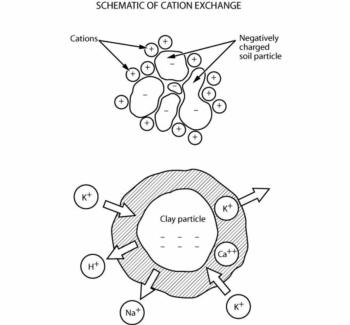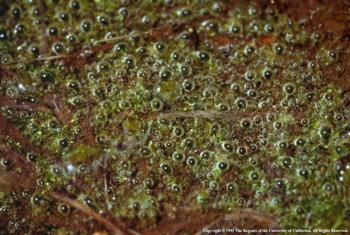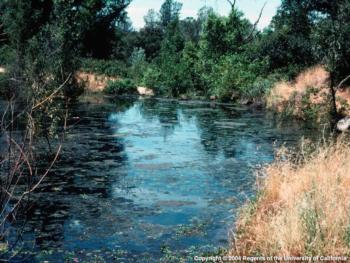Glossary of Nutrient Management Terms
Agricultural nutrient management can employ many complicated terms. Our growing glossary will provide background information on frequently used terminology. There are also many other useful glossaries on nutrient management and climate change related themes listed in our references section.
A-B-C-D-E-F-G-H-I-J-K-L-M-N-O-P-Q-R-S-T-U-V-W-X-Y-Z
| Abiotic |
| Non-living. Abiotic resources comprise non-living things, for instance land, water, air and minerals. |
| Adaptation |
| The process of adjustment to actual or expected climate and its effects. In human systems, adaptation seeks to moderate harm or exploit beneficial opportunities. In natural systems, human intervention may facilitate adjustment to expected climate and its effects.2 |
| Adaptive capacity |
| The ability of systems, institutions, humans, and other organisms to adjust to potential damage, to take advantage of opportunities, or to respond to consequences. |
| Aerobic |
| Requiring oxygen. |
| This form of nitrogen can be used by plants, or converted to nitrate by bacteria (and then taken up by plants). It is a positively charged ion (cation), attracted to negatively charged soil clay. For this reason, it is not leached to a great extent. |
| Ammonification |
| See mineralization. |
| Ammonia volatilization |
| The conversion of ammonium nitrogen to ammonia gas by soil microorganisms. This usually occurs in soils with a high pH, that is a pH greater than 7.5, which are not common in California |
| Anaerobic |
| The absence of oxygen. |
| Anthropogenic |
| Effects which relate specifically to human activities. |
| Biodiversity |
| The variability among living organisms from all sources, including terrestrial, marine, and other aquatic ecosystems and the ecological complexes of which they are part. It includes diversity within species (genetic diversity), between species (species diversity), and between ecosystems (ecosystem diversity). |
| A process where symbiotic (mutually beneficial) and nonsymbiotic organisms can incorporate atmospheric dinitrogen (N2) gas into organic N forms |
| The total weight of all the biological material or the combined mass of all the animals and plants inhabiting a defined area; usually expressed as dry weight per area. |
| Carbon cycle |
| The term used to describe the flow of carbon (in various forms, e.g., as carbon dioxide) through the atmosphere, |
| A naturally occurring gas, also a by-product of burning fossil fuels from fossil carbon deposits, such as oil, gas, and coal, of burning biomass, of land use changes, and of industrial processes (e.g., cement production). It is the principal anthropogenic greenhouse gas that affects the Earth’s radiative balance. It is the reference gas against which other greenhouse gases are measured and therefore has a Global Warming Potential of 1 |
| A metric measure used to compare the emissions from various greenhouse gases based upon their global warming potential (GWP). |
| Carbon footprint |
| The total amount of greenhouse gases (carbon dioxide) that are emitted into the atmosphere each year by a person, family, building, organization, company, or other entity. |
| The capture and removal of carbon dioxide from the atmosphere and storing it in an alternative carbon related reservoir, e.g. soil organic matter, charcoal, tree growth. |
| The measure of a soil's ability to retain positively-charged ions (cations); this measure is usually related to a soil's overall level of fertility 
|
| An anaerobic process where nitrate (NO3-)is converted by into nitrogen gas (N2) specialized bacteria. The conversion of nitrate to dinitrogen is often incomplete and results in the production of nitrous oxide, a potent greenhouse gas. Denitrificiation occurs in the soil only in low oxygen environments, often associated with flooding or soils nearly saturated with water. |
| Ecosystem |
| A dynamic complex of plant, animal and microorganism communities and their non-living environment interacting as a functional unit. |
| Ecosystem process |
| An intrinsic ecosystem characteristic whereby an ecosystem maintaings its integrity. Ecosystem processes include decomposition, production, nutrient cycling, and fluxes of nutrients and energy. |
| Ecosystem service |
| Ecological processes or functions having monetary or non-monetary value to individuals or society at large. |
| Emission factor |
| The average emission rate of a given greenhouse gas (GHG) for a given source, relative to units of activity |
| Eutrophication |
| The enrichment of the nutrient load in ecosystems (terrestrial and aquatic), especially compounds of nitrogen and/or phosphorous. This leads to an undesirable disturbance to the balance of organisms in the ecosystem, affecting terrestrial and aquatic biodiversity and water quality. 
Eutrophication
|
| Evapotranspiration: |
| See transpiration. |
| Field Capacity |
| A measure of a soil's ability to hold water against downward movement due to gravity. This water content is usually reached 2-3 days after a soil has been irrigated or experienced a significant rain event. |
| A measure of the total energy that a gas absorbs over a particular period of time (usually 100 years), compared to carbon dioxide |
| Greenhouse gases are those gaseous constituents of the atmosphere, both natural and anthropogenic, that absorb and emit radiation at specific wavelengths within the spectrum of terrestrial radiation emitted by the Earth’s surface, the atmosphere itself, and clouds. This property causes the greenhouse effect. Water vapor (H2O), carbon dioxide (CO2), nitrous oxide (N2O), methane (CH4), and ozone (O3) are the primary greenhouse gases in the Earth’s atmosphere. Moreover, there are a number of entirely human-made greenhouse gases in the atmosphere, such as the halocarbons and other chlorine- and bromine-containing substances, dealt with under the Montreal Protocol. Beside CO2, N2O, and CH4, the Kyoto Protocol deals with the greenhouse gases sulfur hexafluoride (SF6), hydrofluorocarbons (HFCs), |
| Haber-Bosch process |
| The high pressure chemical process which synthesizes reactive nitrogen as ammonia (NH3) from reaction of N2 and H2. Fritz Haber was responsible for the discovery of the process (1908) and Carl Bosch later developed the technique on an industrial scale |
| The incorporation of compounds (such as reactive nitrogen) into soil microbial biomass, rendering it unavailable for plant uptake. |
| Irrigation well |
| Refers to unregulated wells used for irrigation and other agricultural purposes, but not for drinking water. |
| Leaching |
| The washing out of soluble ions and compounds by water draining through soil |
| During decomposition of plant or animal material, specialized bacteria transform nitrogen to ammonia (NH3) or ammonium (NH4+); the latter can be taken up by plants |
| Mitigation (of climate change) |
| A human intervention to reduce the sources or enhance the sinks of greenhouse gases. |
| A naturally occurring, negatively charged ion that is the primary form of nitrogen used by plants. |
| Nitrite (NO2-) |
| A naturally occurring, negatively charged ion. Nitrite can be produced by the oxidation of Ammonium (NH4+), which is the first step in the nitrification process. Accumulation of nitrite is usually rare in agricultural soils. |
| An aerobic process where ammonium (NH4+) is converted to nitrite (NO2-) and nitrite to nitrate (NO3-) by specific types of bacteria. Nitrous oxide, a potent greenhouse gas, can be produces as an intermediary biproduct during this process. |
| A compound which decreases the activity of the microbes responsible for nitrification, delaying the conversion from the relatively-immobile ammonium (NH4+) to the easily-leached nitrate (NO3-). There are several compounds that can inhibit nitrification, but they are generally either fertilizer coatings or mixed in with fluid fertilizer formulations. |
| Nitrogen cycle |
| The circulation of nitrogen among the atmosphere, plants, animals, and microorganisms that live in soil and water. |
| Nitrogen fertilizer recovery efficiency |
| The percentage of fertilizer-N recovered in aboveground plant biomass during the growing season. |
| Dinitrogen gas occurs when two nitrogen atoms form a very strong, trivalent chemical bond; it comprises 78% of the atmosphere. Although largely inert, nitrogen gas can be "fixed" into biologically useful forms in the soil |
| “Organic nitrogen” refers to a nitrogen compound that had its origin in living material and is still part of a carbon-chain complex. It can enter soil as decomposed plant or animal tissue. It is not available to plants until microorganisms transform it to ammonium (NH4+). |
| The proportion of all N inputs that are removed in harvested crop biomass, contained in recycled crop residues, and incorporated into soil organic matter and inorganic N pools. |
| An oxide of nitrogen formed mainly as a biproduct of microbial processes (see denitrification and nitrification) in soil and water. It is also emitted by combustion and other industrial processes. N20 is a potent greenhouse gas that is 298 times more effective at trapping heat in the atmosphere than carbon dioxide over a 100 year period |
| Any material of biological origin. |
| See Nitrogen, organic. |
| Partial factor productivity for N fertilizer |
| The amount of increase in yield of the harvested portion of a crop per unit of fertilizer N applied. |
| Reactive nitrogen |
| Collectively any chemical form of nitrogen other than di-nitrogen |
| Riparian |
| Interface between land and a river or stream 
Riparian Habitat
|
| Ruminants |
| Mammals with a four-chamber complex stomach, that digests plant-based food by initially softenting it within the animal's first stomach, then regurgitating the semi-digested mass, now known as cud, and chewing it again. The process of rechewing the cud to further break down plant matter and stimulated digestion is called 'ruminating' |
| Silage |
| Any crop that is harvested green and preserved in a succulent condition by partial fermentation, often preseved in a silo. |
| Sink |
| Any process, activity or mechanism that removes a greenhouse gas, an aerosol, or a precursor of a greenhouse gas or aerosol from the atmosphere. |
| Specialty crop |
| Fruits, vegetables, tree nuts, dried fruits, and horticulture and nursery crops (including floriculture) |
| Synthetic fertilizer |
| A "human made" commercially prepared inorganic compound of plant nutrients. |
| Transpiration |
| The process by which water is drawn through plants and returned to the air as water vapor. Evapotranspiration is combined loss of water to the atmosphere via the processes of evaporation and transpiration |
| Volatilization |
| The conversion of a liquid or a solid into a gas |
| Water-use efficiency (WUE) |
| Carbon gain by photosynthesis per unit of water lost by evapotranspiration. It can be expressed on a short-term basis as the ratio of photosynthetic carbon gain per unit transpirational water loss, or on a seasonal basis as the ratio of net primary production or agricultural yield to the amount of water used. |
1FAO Glossary on Organic Agriculture
3Rosenstock, T. S., Liptzin, D., Six, J., & Tomich, T. P. (2013). Nitrogen fertilizer use in California: Assessing the data, trends and a way forward. California Agriculture, 67(1), 68–79. http://doi.org/10.3733/ca.E.v067n01p68
4European Nitrogen Assessment glossary
5European Commission Agriculture and Rural Development Glossary
6USDA/NRCS Fate and Transport of Nutrients: Nitrogen
7EPA Glossary of Climate Change Terms
8United Nations Framework Convention on Climate Change
9Paul, E. A. (2014). Soil microbiology, ecology and biochemistry. Academic press.
10Cassman, K. G., Dobermann, A., & Walters, D. T. (2002). Agroecosystems, nitrogen-use efficiency, and nitrogen management. AMBIO: A Journal of the Human Environment, 31(2), 132-140. (link)
11National Agricultural Library Agricultural Glossary (USDA)
12California Department of Food and Agriculture (CDFA) Specialty Crop Block Grant Program
